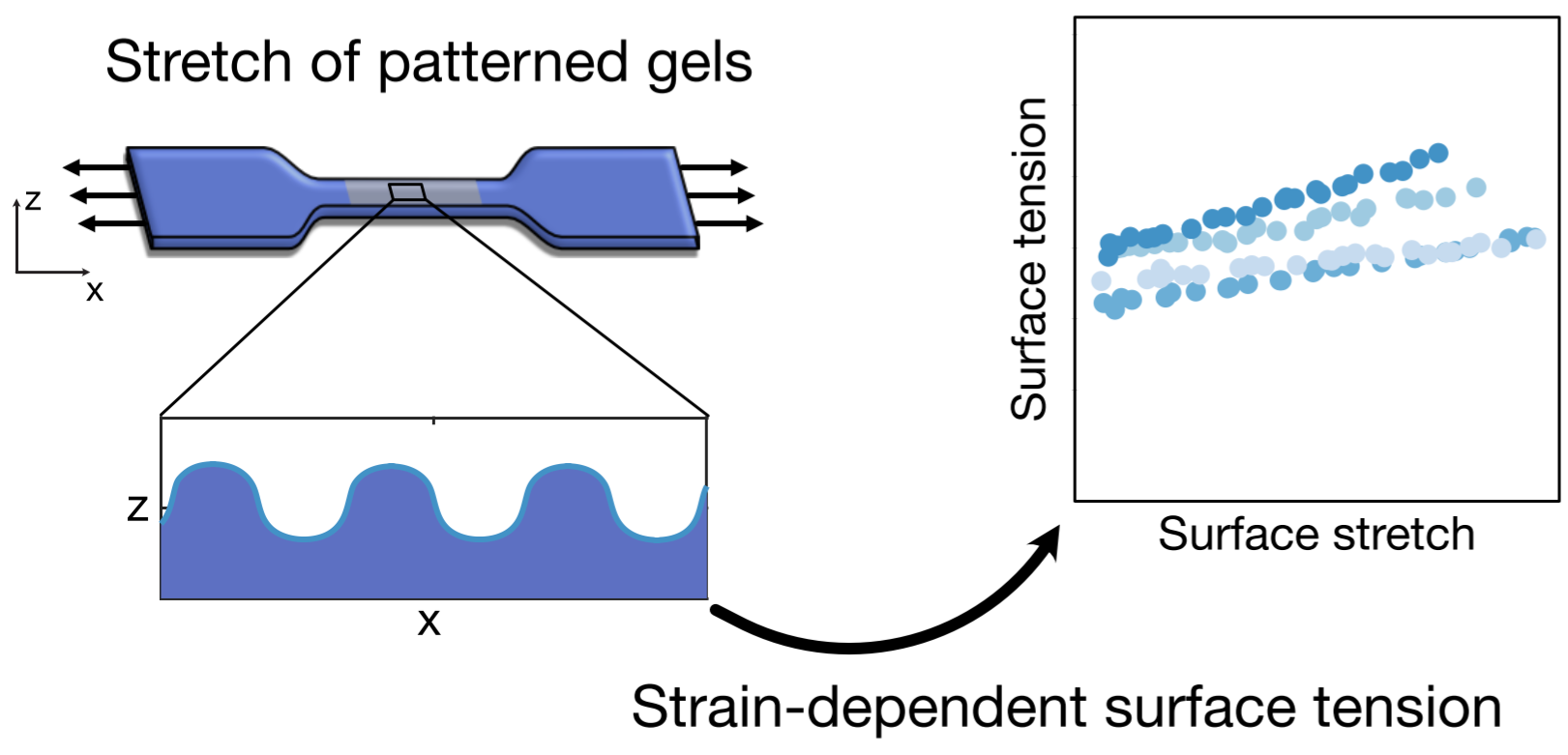Paper published
The surface tension of soft silicone gels changes with deformation state in the new paper from Nicolas and co-authors, recently published in Physical Review Letters.
Surface tension is the driving force of a plethora of small- scale phenomena. In liquids, it is responsible for the spherical shape of small drops and for the shape of menisci. In soft solids, surface tension rounds off sharp features and more generally governs mechanical responses at small scales. Despite the growing interest in soft solids for applications in microsystems and robotics, the essential nature of their surface properties remains elusive.
In this paper, Nicolas and co-authors stretch patterned silicone gels and demonstrate that their surface tension changes with the deformation state. This result implies that polymeric network plays a role in the surface mechanics of elastomeric materials, usually considered to be liquid-like. It opens the way for a deeper understanding of the origin of surface tension in soft solids, and for its manipulation towards practical applications.

Nicolas Bain, Anand Jagota, Katrina Smith-Mannschott, Stefanie Heyden, Robert W. Style, and Eric R. Dufresne, Surface Tension and the Strain-Dependent Topography of Soft Solids. Phys. Rev. Lett. 127, 208001
external page DOI:https://doi.org/10.1103/PhysRevLett.127.208001